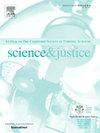Forensically useful mid-term and short-term temperature reconstruction for quasi-indoor death scenes
IF 1.9
4区 医学
Q2 MEDICINE, LEGAL
引用次数: 0
Abstract
While estimating postmortem interval (PMI) ambient temperature plays a pivotal role, so its reconstruction is crucial for forensic scientists. The recommended procedure is to correct temperatures from the nearest meteorological station based on measurements from the death scene; typically applying linear regression. Recently, there have been attempts to use different algorithms, that can improve that correction, for example GAM algorithm. Unfortunately, the improvements are usually a consequence of using more dependent variables than just the temperature from the death scene (e.g. humidity), which is impractical.
This study develops practical new methods to accurately reconstruct ambient temperatures at a death scene, using just temperature measurements. Since the main difficulty preventing practitioners from using the correction protocol more frequently is likely the need to record temperatures on-site for at least several days, we searched for possibilities to shorten the measurement period. For this purpose, we tested two less popular algorithms to achieve this goal. The concurrent regression model (the model from the functional data analysis field) for the mid-term reconstruction (measurements lasting several days) and the functional model based on Fourier expansion for the short-term reconstruction (measurements lasting a few hours).
The algorithms’ performance was tested using data collected in six places: a roof and an attic of a heated building, an unheated garage inside the heated building, an unheated wooden shack, an uninhabited building, and an underground (the data logger was buried about 30 cm below the ground level). We classified these locations as quasi-indoor conditions, contrasting them with typical indoor conditions, where temperatures are nearly constant, and typical outdoor conditions, where there is no heat insulation.
The mid-term model reduced error compared to the linear regression, providing nearly perfect reconstruction for measurement periods longer than six days. More importantly, however, the accuracy of short-term reconstruction was also high. The short-term model closely matched the concurrent regression model’s performance after only four to five hours of measurements.
In practice, both methods are very similar to the standard procedure. The main difference is the change in the algorithm and its implementation. In conclusion, this study demonstrates that correction of weather station temperatures can provide fairly accurate temperature data for use in estimating PMI after only 4-5 h of measurements on a death scene.
准室内死亡现场的中期和短期温度重建在法医上很有用。
在估计死后时间间隔(PMI)时,环境温度起着至关重要的作用,因此对其进行重建对法医来说至关重要。建议的程序是根据死亡现场的测量结果,校正最近气象站的温度;通常应用线性回归。最近,有人尝试使用不同的算法来提高这种校正,例如GAM算法。不幸的是,这些改进通常是使用更多因变量的结果,而不仅仅是死亡现场的温度(例如湿度),这是不切实际的。这项研究开发了实用的新方法来精确地重建死亡现场的环境温度,仅使用温度测量。由于阻止从业者更频繁地使用校正方案的主要困难可能是需要在现场记录至少几天的温度,我们寻找缩短测量周期的可能性。为此,我们测试了两种不太流行的算法来实现这一目标。中期重建(测量持续数天)的并发回归模型(来自功能数据分析领域的模型)和短期重建(测量持续数小时)的基于傅立叶展开的功能模型。算法的性能测试使用在六个地方收集的数据:供暖建筑的屋顶和阁楼,供暖建筑内未供暖的车库,未供暖的木制小屋,无人居住的建筑和地下(数据记录器埋在地面以下约30厘米处)。我们将这些地点分类为准室内条件,并将其与典型的室内条件(温度几乎恒定)和典型的室外条件(没有隔热)进行对比。与线性回归相比,中期模型减少了误差,为超过6天的测量周期提供了近乎完美的重建。然而,更重要的是,短期重建的准确性也很高。经过四到五个小时的测量,短期模型的性能与并行回归模型非常接近。实际上,这两种方法与标准程序非常相似。主要区别在于算法及其实现的变化。总之,本研究表明,气象站温度的校正可以提供相当准确的温度数据,用于估算死亡现场仅4-5小时的测量。
本文章由计算机程序翻译,如有差异,请以英文原文为准。
求助全文
约1分钟内获得全文
求助全文
来源期刊

Science & Justice
医学-病理学
CiteScore
4.20
自引率
15.80%
发文量
98
审稿时长
81 days
期刊介绍:
Science & Justice provides a forum to promote communication and publication of original articles, reviews and correspondence on subjects that spark debates within the Forensic Science Community and the criminal justice sector. The journal provides a medium whereby all aspects of applying science to legal proceedings can be debated and progressed. Science & Justice is published six times a year, and will be of interest primarily to practising forensic scientists and their colleagues in related fields. It is chiefly concerned with the publication of formal scientific papers, in keeping with its international learned status, but will not accept any article describing experimentation on animals which does not meet strict ethical standards.
Promote communication and informed debate within the Forensic Science Community and the criminal justice sector.
To promote the publication of learned and original research findings from all areas of the forensic sciences and by so doing to advance the profession.
To promote the publication of case based material by way of case reviews.
To promote the publication of conference proceedings which are of interest to the forensic science community.
To provide a medium whereby all aspects of applying science to legal proceedings can be debated and progressed.
To appeal to all those with an interest in the forensic sciences.
 求助内容:
求助内容: 应助结果提醒方式:
应助结果提醒方式:


